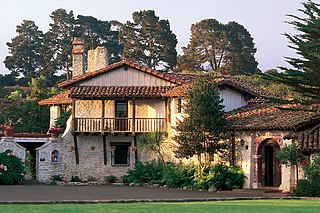
Monterey is a city in Monterey County on the southern edge of Monterey Bay on the U.S. state of California's Central Coast. Founded on June 3, 1770, it functioned as the capital of Alta California under both Spain (1804–1821) and Mexico (1822–1846). During this period, Monterey hosted California's first theater, public building, public library, publicly funded school, printing press, and newspaper. It was originally the only port of entry for all taxable goods in California. In 1846, during the Mexican–American War of 1846–1848, the United States Flag was raised over the Customs House. After Mexico ceded California to the U.S. at the end of the war, Monterey hosted California's first constitutional convention in 1849.

Hayward is a city located in Alameda County, California, United States, in the East Bay subregion of the San Francisco Bay Area. With a population of 162,954 as of 2020, Hayward is the sixth largest city in the Bay Area, and the third largest in Alameda County. Hayward was ranked as the 34th most populous municipality in California. It is included in the San Francisco–Oakland–San Jose Metropolitan Statistical Area by the US Census. It is located primarily between Castro Valley, San Leandro and Union City, and lies at the eastern terminus of the San Mateo–Hayward Bridge. The city was devastated early in its history by the 1868 Hayward earthquake. From the early 20th century until the beginning of the 1980s, Hayward's economy was dominated by its now defunct food canning and salt production industries.

Pittsburg is a city in Contra Costa County, California, United States. It is an industrial suburb located on the southern shore of the Suisun Bay in the East Bay region of the San Francisco Bay Area, and is part of the Sacramento–San Joaquin River Delta area, the Eastern Contra Costa County area, and the San Francisco Bay Area. The population was 76,416 at the 2020 United States Census.
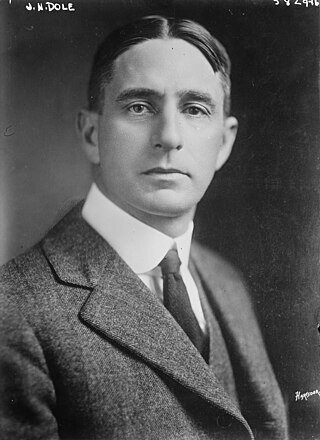
James Drummond Dole, the "Pineapple King", was an American industrialist who developed the pineapple industry in Hawaii. He established the Hawaiian Pineapple Company (HAPCO) which was later reorganized to become the Dole Food Company that operates in over 90 countries. Dole was a cousin of Sanford B. Dole, President of the Republic of Hawaii.

The Santa Clara Valley is a geologic trough in Northern California that extends 90 miles (140 km) south–southeast from San Francisco to Hollister. The longitudinal valley is bordered on the west by the Santa Cruz Mountains and on the east by the Diablo Range; the two coastal ranges meet south of Hollister. The San Francisco Bay borders the valley to the north, and fills much of the northern third of the valley. The valley floor is an alluvial plain that formed in the graben between the San Andreas Fault to the west and the Hayward and Calaveras faults to the east. Within the valley and surrounding the bay on three sides are the urban communities of San Mateo County, Santa Clara County, and Alameda County, while the narrow southern reaches of the valley extend into rural San Benito County to Hollister. In practical terms, the central portion of the Santa Clara Valley is often considered by itself, contained entirely within Santa Clara County.
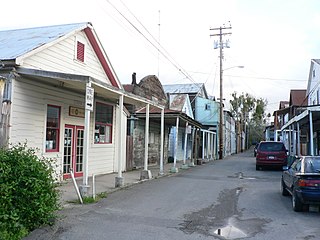
Locke, also known as Locke Historic District, is an unincorporated community in the Sacramento–San Joaquin River Delta of California, United States. The 14-acre town (5.7 ha) was first developed between 1893 and 1915 approximately one mile north of the town of Walnut Grove in Sacramento County.

Del Monte Foods Inc. is an American food production and distribution company headquartered in Walnut Creek, California. Del Monte Foods is one of the largest producers, distributors and marketers of branded processed food for the U.S. retail market, generating approximately $1.73 billion of annual sales. Its portfolio of brands includes Del Monte, S&W, Contadina, College Inn, Kitchen Basics, Joyba, and Take Root. Greg Longstreet is the current Chief Executive Officer of Del Monte Foods. Several Del Monte products hold the number one or two market share position. The company also produces, distributes and markets private-label food.

The Gulf of Georgia Cannery is a National Historic Site of Canada located in Steveston village in Richmond, British Columbia.

The Alaska Packers' Association (APA) was a San Francisco-based manufacturer of Alaska canned salmon founded in 1891 and sold in 1982. As the largest salmon packer in Alaska, the member canneries of APA were active in local affairs, and had considerable political influence. The Alaska Packers' Association is best known for operating the "Star Fleet," the last fleet of commercial sailing vessels on the West Coast of North America, as late as 1927.

The Kake Cannery is a historic fish processing facility near Kake, Alaska. Operated by a variety of companies between 1912 and 1977, the cannery was one of many which operated in Southeast Alaska, an area historically rich in salmon. The cannery's surviving buildings are among the best-preserved of the period, and provide a window into the labor practices of the cannery operators, which emphasized production over working conditions, and made significant use of immigrant contract workers. It was declared a National Historic Landmark in 1997.
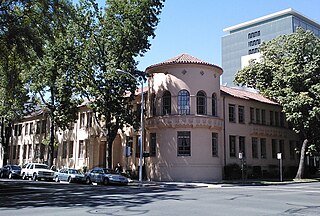
The Blue Anchor Building, also known as the California Fruit Exchange, is a historic building located in Sacramento, California. It is currently home to the Governor of California's Office of Planning & Research.
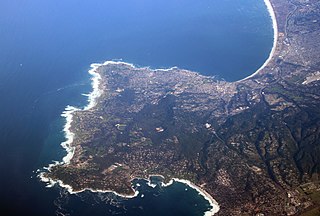
The Monterey Peninsula anchors the northern portion on the Central Coast of California and comprises the cities of Monterey, Carmel, and Pacific Grove, and the resort and community of Pebble Beach.

The Rath Packing Company Administration Building, also known as Adams Store Inc., is a historic Late Gothic Revival building in Waterloo, Iowa.
The Marshall J. Kinney Cannery, located in Uniontown, Astoria, Oregon, United States, between Fifth and Seventh streets, was constructed in 1879 and became one of the city's longest-running salmon canneries. Run by the Astoria Packing Company, of which Marshall J. Kinney was president, the complex quickly became the "largest and most extensive salmon-packing establishment on the Pacific Coast". In 1894, the cannery was completely rebuilt after being burned to the ground. Five years later Kinney became part of the Columbia River Packers Association, joining several other canneries and packing companies. By 1904, the complex supported three production lines; Kinney continued cannery operations until the 1920s when it was primarily used as a central machine shop and warehouse for the Columbia River Packers Association. In 1954, a cargo ship ran into the complex, part of which was lost. Intact portions were used for storage until 1980 and today house shops and small businesses. The cannery was added to the National Register of Historic Places on June 30, 1989, but was delisted on September 8, 1997.

The Libby, McNeill and Libby Fruit and Vegetable Cannery was a cannery operated in Sacramento, California by Libby, McNeill, and Libby. The building is now listed on the National Register of Historic Places.
Sacramento, California, United States, has been an important location in the history of canning thanks to its situation on the intersection of major transportation routes and proximity to large fertile growing areas. Sacramento’s canning industry has prepared a large variety of agricultural products, but is best known for canned tomatoes, earning Sacramento the nickname, "The Big Tomato."
Thomas Foon Chew (1889-1932) was an immigrant from China who became the richest Chinese American in California and became known as the "Asparagus King" in the 1920s.

Robert R. Jones was an American architect in Carmel-by-the-Sea, California best known for his Modern architecture. Jones designed numerous residences and commercial buildings in the Monterey Peninsula. In the post-war period, he emerged as a prominent figure among architects and designers who played a pivotal role in shaping Carmel's modernist landscape from the middle 20th century onward. His was known for his design aesthetic that was a Modern architecture-style, combined with elements from the Second Bay Tradition. His creation, the Monterey Airport Administration building, was honored with a design award by the Smithsonian Institution.
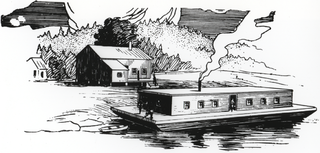
Hapgood-Hume Company was a Salmon cannery and now a historical site in West Sacramento, California in Yolo County. The site of the former Hapgood-Hume Company is a California Historical Landmark No. 1040 listed on April 1, 2009. The Hapgood-Hume Company was the First Pacific Coast Salmon Cannery founded on April 1, 1864, on the Sacramento River, closed in 1873 in Washington state. The site of the Hapgood-Hume Company was a National Register of Historic Places, #66000938, from April 6, 1964, to July 14, 2004. The Hapgood-Hume Company was formed by Robert Deniston Hume, William Hume, John Hume, and George Hume, with a friend Andrew Hapgood. All of founders of the company came from Maine. Hapgood had been a tinsmith and a fisherman in Maine, arriving in California in 1864.




















